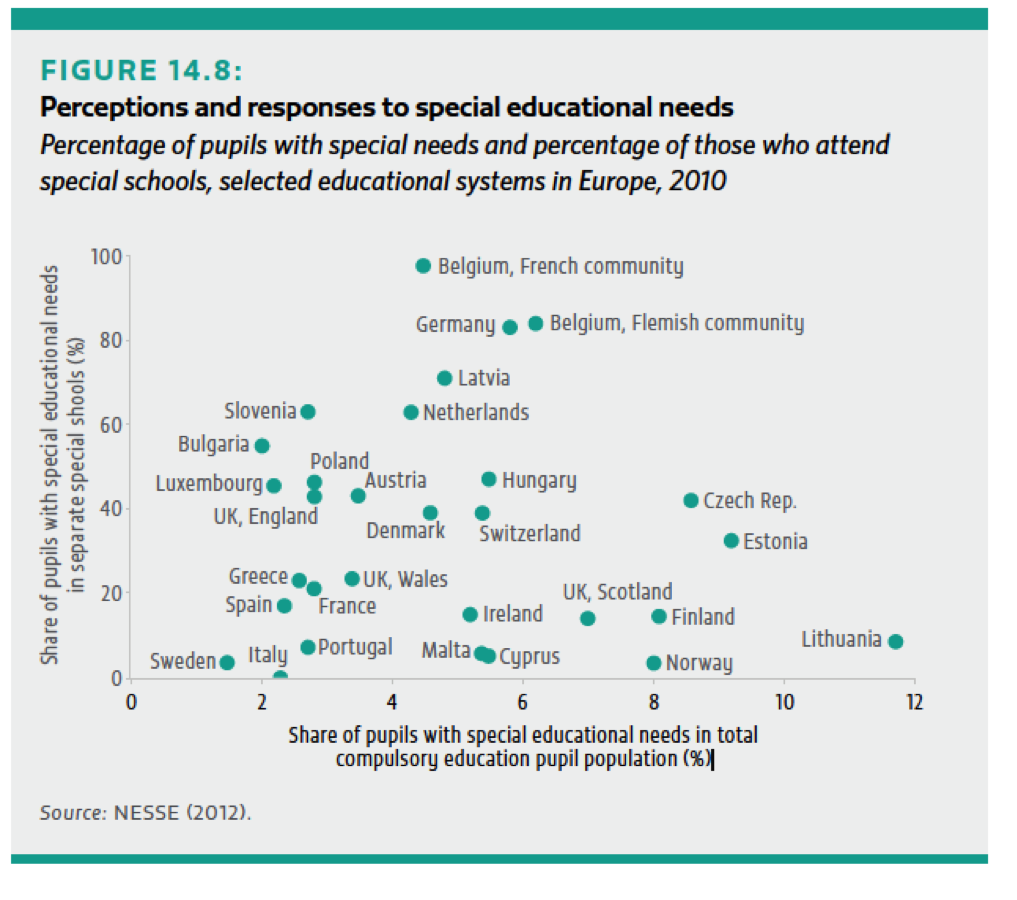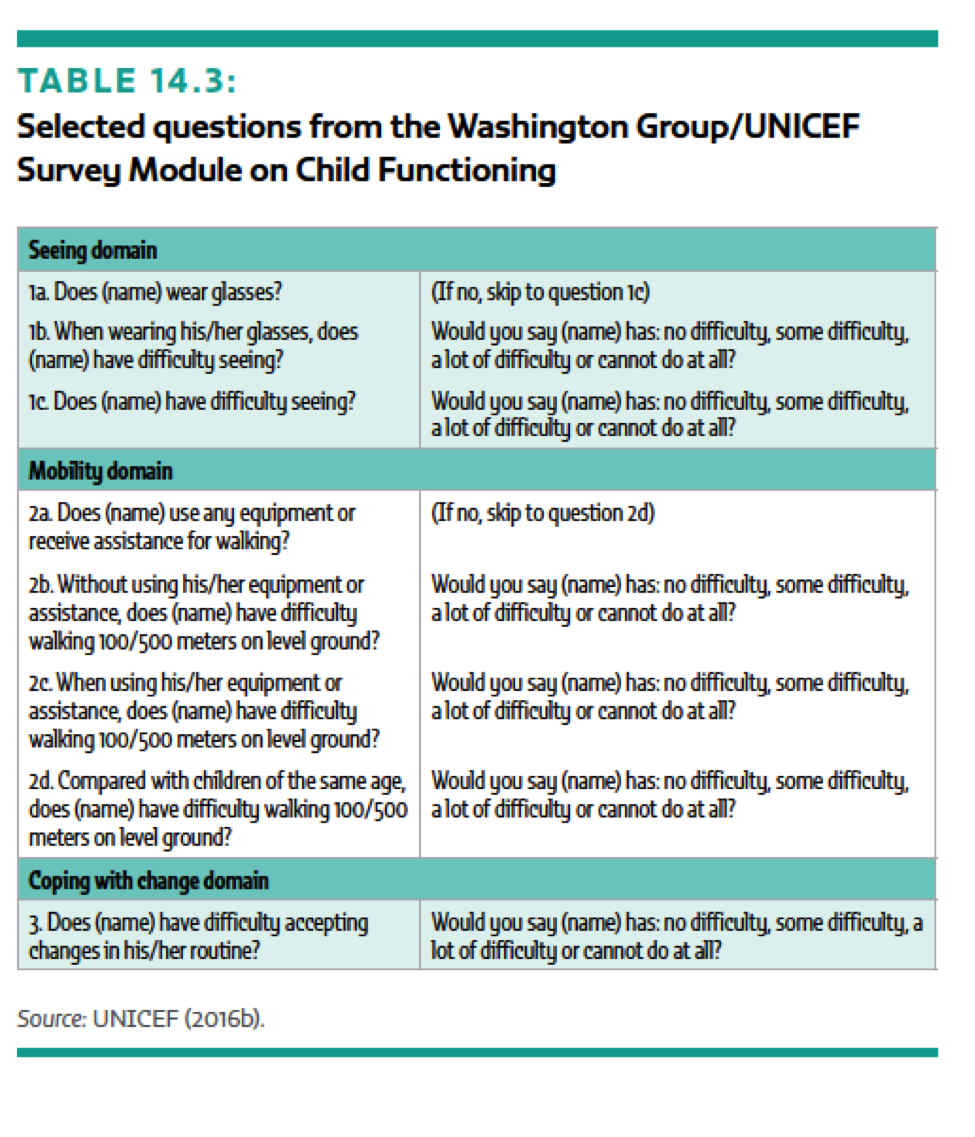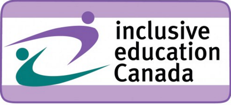The post below comes from UNESCO’s Global Education Monitoring Report, Chapter 14 on Equity.
DISABILITY
People with disabilities are among the most marginalized and excluded groups and are routinely denied their right to education of good quality. The 2006 Convention on the Rights of Persons with Disabilities commits governments to ensure an inclusive education system at all levels (United Nations, 2006).
The SDG agenda also focuses on disability and target 4.5 specifically commits all countries to ensure equal access to all levels of education and vocational training, regardless of disability status. However, determining progress depends on an operational and internationally comparable measure of disability, which has remained elusive, because disability has diverse forms and there are important ethical and cost considerations. Still, progress has been made.
Cross-country comparisons are complicated by differences in classification systems. In education, the concept of special educational needs is commonly used, which is broader than the concept of disability: in some countries, it includes children from other socially marginalized groups. Across 30 education systems in Europe, 3.7% of compulsory education pupils were identified as having a special educational need in 2010. It was less than 2% in Sweden and almost 12% in Lithuania.
Considerable variation can be observed even within one country – in the United Kingdom, it ranged from 2.8% in England to 7% in Scotland – and over time, with Estonia, for instance, reporting 19% of children having special educational needs in 2008 but 9% in 2010 when a different definition was used. Policies vary considerably. More than 40% of students with special educational needs overall were in special schools, but the share was more than 80% in Belgium and Germany and almost zero in Italy and Norway (NESSE, 2012) (Figure 14.8).
 Two approaches have sought to develop a common classification framework. In the first, the OECD asked countries to reorganize their national classification systems into three categories: (a) ‘disabilities’, which have organic origins and for which there is substantial agreement about categories (e.g. sensory, motor, severe, profound intellectual disabilities); (b) ‘difficulties’, which do not appear to have organic origins or to be directly linked to socio-economic, cultural or linguistic factors (e.g. behavioural difficulties, mild learning difficulties, dyslexia); and (c) ‘disadvantages’, which arise from socio-economic, cultural and/or linguistic factors (OECD, 2005b).
Two approaches have sought to develop a common classification framework. In the first, the OECD asked countries to reorganize their national classification systems into three categories: (a) ‘disabilities’, which have organic origins and for which there is substantial agreement about categories (e.g. sensory, motor, severe, profound intellectual disabilities); (b) ‘difficulties’, which do not appear to have organic origins or to be directly linked to socio-economic, cultural or linguistic factors (e.g. behavioural difficulties, mild learning difficulties, dyslexia); and (c) ‘disadvantages’, which arise from socio-economic, cultural and/or linguistic factors (OECD, 2005b).
This approach resulted in unexpected variation. For example, under the tightly defined ‘disabilities’ category, the average percentage of primary education students who received additional resources in 2001 was 2.5%, but the range was from 0.5% in the Republic of Korea and Turkey to 6.1% in the United States. The range under the other two categories was much broader (e.g. an average of 2.1% of students with ‘difficulties’, ranging from zero in Italy to 19% in England, United Kingdom), revealing very different applications of the terms (OECD, 2005b).
The second approach is the International Classification of Functioning, Disability and Health (ICF), adopted by the World Health Assembly in 2001. Based on the bio-psychosocial model, which defines disability as a result of the interaction between the features of a person and those of the environment in which that person lives, ICF assesses disability in terms of: body functions and structures; activities (execution of tasks or actions) and participation (involvement in a life situation); and contextual factors. The ICF covers a detailed framework of thousands of subdomains, which in practice are difficult to measure.
A set of principles is recommended for an operational measure of disability in large-scale population surveys.
Questions are to focus on functional limitations (instead of disability) and responses should be scaled, instead of a yes-no choice (Mont, 2007). The Washington Group on Disability Statistics, under the auspices of the United Nations Statistical Division, has tried to adapt the ICF framework into a module that assesses six adult functioning domains: seeing, hearing, walking, remembering/concentrating, self-caring, and communicating (Washington Group, 2006).
The Washington Group also recognized that assessing disability among children required different methodologies, so they developed the Module on Child Functioning in collaboration with UNICEF. It is made up of questions to be answered by mothers or by primary caregivers of children aged 2 to 4 and 5 to 17 (Washington Group and UNICEF, 2014). Assessed domains included seeing, hearing, mobility/walking, attention, learning, communicating, self-care, motor skills, emotions, behaviour, play, development of relationships and coping with change. Where appropriate, respondents are asked to compare the functional difficulties of their child with those of a child of similar age (Table 14.3). The module underwent extensive cognitive and field testing between 2012 and 2016. For example, it was field tested with questions on 12 domains in Samoa as part of the 2014 DHS. It showed that 2.7% of 5- to 9-year-olds were unable to function at all in at least one domain, while 5.3% faced a lot of difficulty in at least one domain (Loeb, 2015). A parallel validation process is incorporating the module into the next round of UNICEF’s MICS.
The module underwent extensive cognitive and field testing between 2012 and 2016. For example, it was field tested with questions on 12 domains in Samoa as part of the 2014 DHS. It showed that 2.7% of 5- to 9-year-olds were unable to function at all in at least one domain, while 5.3% faced a lot of difficulty in at least one domain (Loeb, 2015). A parallel validation process is incorporating the module into the next round of UNICEF’s MICS.
In 2016, the development of guidelines for producing statistics on children with disabilities and a user manual with technical information for implementation are due to be completed. An operational measure of disability is important to keep the education challenges of individuals with disabilities high on the global agenda. But other steps are needed.
To ensure that education is inclusive, educators must be better prepared and school infrastructures properly adapted to address the needs of individuals with disabilities (see Chapter 17). Monitoring these aspects is important to ensure that schools and teachers do not leave any learners behind.
Reference:
2016. UNESCO. Global Education Monitoring Report: Education for people and planet. United Nations Educational, Scientific and Cultural Organization. France.
